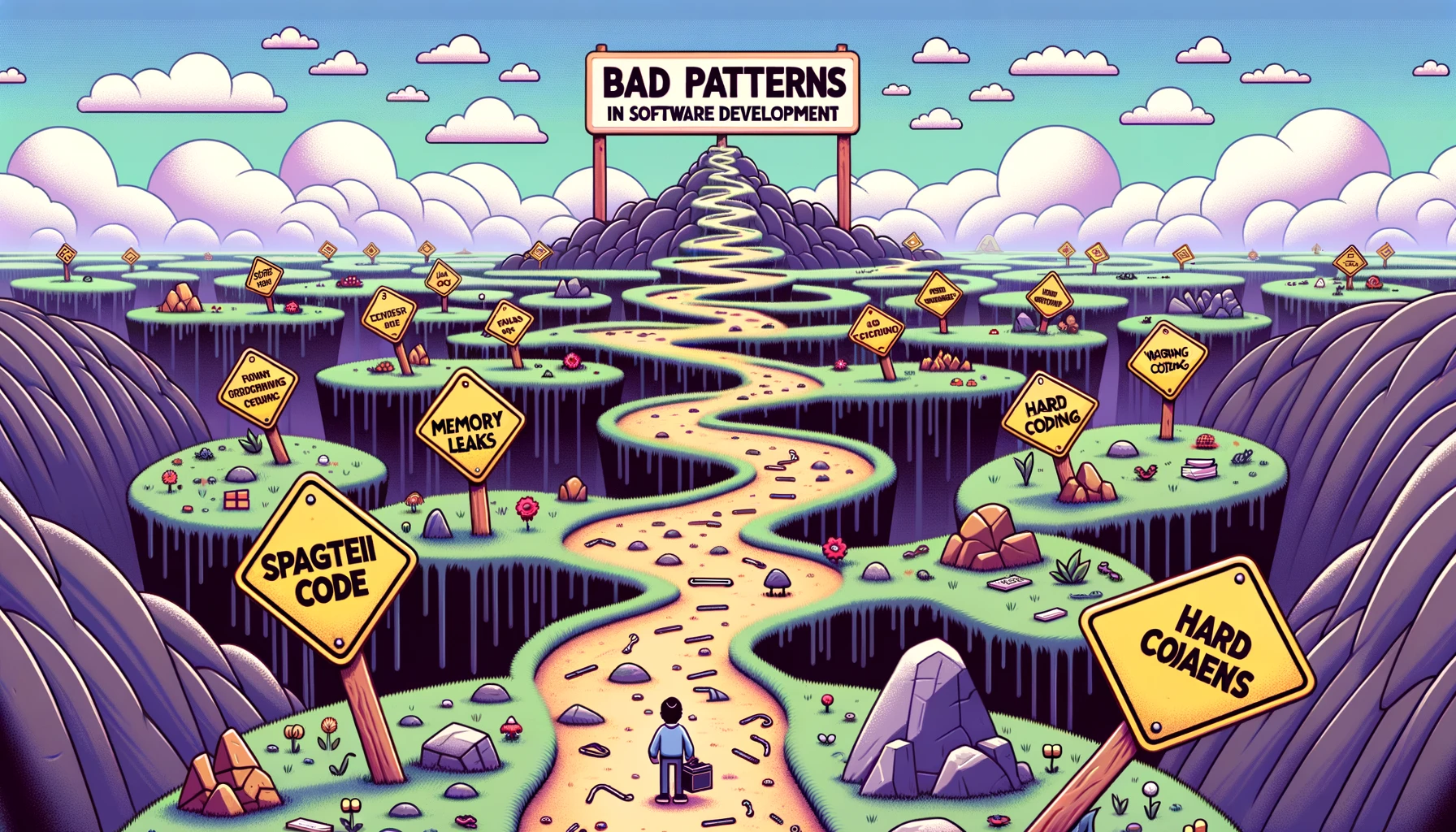Table of contents
Software development is a challenging field that requires keen attention to detail. This guide aims to identify ten common bad patterns in software development. Understanding these patterns can help professionals avoid pitfalls and write better code.
1. Global State
Explanation
Global state refers to data accessible from multiple parts of an application. This often leads to unexpected behaviour and bugs that are hard to trace.
Pros
- Easy to implement.
- Reduces the number of parameters to be passed around.
Cons
- Makes code more challenging to test.
- Increases the risk of data corruption.
2. God Objects
Explanation
God objects are objects in Object-Oriented Programming that know too much or do too much. They violate the Single Responsibility Principle.
Pros
- Quick to build functionality around a single object.
Cons
- Difficult to maintain.
- Goes against the principles of Object-Oriented Design.
3. Spaghetti Code
Explanation
Spaghetti code is tangled and unstructured without a clear architecture or design pattern.
Pros
- Quick to write initially.
Cons
- Extremely hard to maintain.
- Difficult to understand and debug.
4. Hardcoding Values
Explanation
Hardcoding refers to the bad practice of embedding configuration options directly into the code.
Pros
- Quick and easy to implement.
Cons
- Makes the application less flexible.
- Complicates code reusability.
5. Singleton Abuse
Explanation
Singleton abuse occurs when the singleton pattern is used unnecessarily. A singleton ensures that a class has just one instance and provides a way to access it globally.
Pros
- Easy to access data.
Cons
- Global state risks.
- Makes unit testing challenging.
6. Deep Nesting
Explanation
Deep nesting occurs when code structures like loops or conditionals are deeply nested within each other.
Pros
- Can provide a quick solution to a complex problem.
Cons
- Reduces code readability.
- Increases cognitive load.
7. Lack of Comments
Explanation
A lack of comments means that the codebase has little to no documentation.
Pros
- Faster initial development.
Cons
- Makes code maintenance more difficult.
- Can confuse future developers.
8. Magic Numbers
Explanation
Magic numbers refer to using raw numbers in the code without explanation or named constant.
Pros
- Quick to implement.
Cons
- Reduces code readability.
- Makes future updates difficult.
9. Premature Optimisation
Explanation
Premature optimisation is spending a lot of time optimising code before understanding if necessary.
Pros
- May lead to more efficient code early on.
Cons
- Wastes time.
- Could make the code more complex.
10. Copy-Pasting Code
Explanation
This involves copying and pasting the same or similar lines of code in multiple places.
Pros
- Saves time initially.
Cons
- Makes the codebase harder to maintain.
- Increases the risk of bugs.
Summary
Awareness of these bad patterns is the first step in avoiding them. Each has its own set of advantages and disadvantages. Understanding the trade-offs can guide better decision-making in software development.
